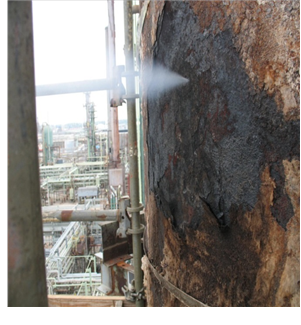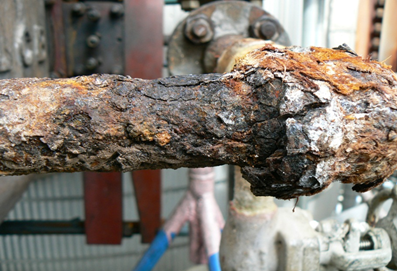As any refining or petrochemical plant manager knows, corrosion can occur on insulated piping at any facility, and is particularly difficult to prevent, track, and mitigate. Corrosion under insulation (CUI) has been a major challenge for the petrochemical and refining industries since the first pipelines were insulated with wrappings. As a global issue, CUI directly contributes to health, safety, and environmental (HSE) issues, lost production, and increased maintenance costs.

Painting has been the typical CUI mitigation method for over 40 years and while effective, its protective life under insulation is limited and repainting of existing piping systems is rarely done. There are a number of effective, long-life CUI prevention methods currently available, including stainless-steel, protective cages, organic coating, aluminum wrapping of austenitic stainless steel pipe, and thermal spray aluminum, so facility managers must choose among them for the best fit for purpose solution.
CUI Facts and Data
Historically, industry data shows that approximately 60% of pipe leaks are caused by CUI. Studies also show that the age of the piping system when the CUI leak occurred is bi-modal. One leak population mean is found in pipes with 16 to 20 years of service life, and a second population mean is in piping with service life of greater than 26 years.

Examination of the two populations showed that the 16-to-20-year population is comprised primarily of a nominal pipe size (NPS) of 4-inch and smaller piping, which tend to be pipes with low wall thickness. The 26 years-plus population is composed mainly of pipes with an NPS of 6 inches and greater, which tends to be piping with heavier wall thickness and repeat failures of small diameter pipe. Two more facts were discovered and considered along with the leak data analysis:

















Comments and Discussion
Add a Comment
Please log in or register to participate in comments and discussions.